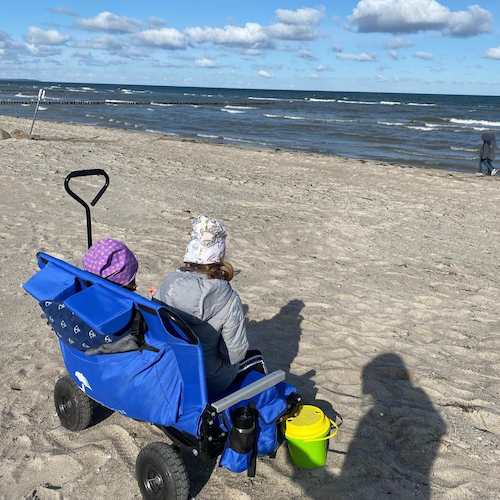Although you may have started your surfing life on a longboard (as many do), there’s a strong possibility you’re riding something a little more beginner-friendly, like a funboard or hybrid. In that case, as your surfing ability progresses you’ll eventually encounter a crossroads of sorts – to longboard or to shortboard? If it’s the long you’ve chosen, you’re going to need to adjust your methods just a bit – the extra length and volume of the longboard may present a bit of a struggle, but not one that you can’t overcome in a session or two.
Paddling Out
Longboard surfboards make a lot of things easy – catching small waves and maintaining speed, in particular. But when it comes to the paddle-out, longboards present an extra challenge, especially in decent-sized surf where no deep-water channel is available. Unlike a shortboard, duck-diving under waves is not an option on a longboard; instead, you’ll have to employ the turtle roll. The turtle roll is remarkably simple given its effectiveness. Basically, all you’re doing is rolling off your board, turning your surfboard upside down, and then placing the overturned board over your head. The most difficult aspect of turning turtle is timing it just right – try to execute the roll moments before an oncoming wave reaches you. Get a good breath of air and hold your underwater position until the wave passes over your board. Once the wave has pushed past you, flip your board back over and climb back on. Resume paddling, and repeat as necessary.
Early Bird Catches the Wave
We’re talking about the incredibly important rule of longboarding, which is, simply, catch the wave early. This can’t be emphasized enough. Here’s why: unlike a shorter surfboard, a longboard does not afford you the ability to drop down a steep wave face. You’ll realize this the moment you try dropping down a vertical face – instead of cruising into the wave, your nose will pearl and you will promptly sail over your board and into the water. The solution? Catch waves before they get to their steep point. Riding a longboard, your clear-cut advantage (often to the dismay of nearby shortboarders) is that you can paddle quickly. Utilize this luxury and catch waves early.
Free Ride
Once you’ve caught a wave, get to your feet and keep your knees bent. Stay relaxed – in fact, that’s really the mantra of longboarding, so we repeat: stay relaxed. Find the right spot on your board that allows you to maneuver through the bottom turn and pick a trim line. While trimming across the wave face, you have a few options depending on what the wave is doing. If you’re presented with a soft shoulder, you can fade or cutback by turning the board back toward the curl.
Cross-Stepping
The generous length of a longboard affords the surfer a variety of maneuvers that involve traveling up and down the length of the surfboard. At the root of these maneuvers is the cross-step. Before you begin your cross-step, set your board on a nice trim line. Once you’re gliding across the wave, cross your rear leg over your front leg and then bring the rear foot around behind the other foot. The entire move should be done quickly and smoothly. To cross-step back towards the rear of the board, perform the entire maneuver in reverse. For added balance during the cross-step, hold your arms out as if walking a tightrope.
Riding the Nose
For a few decades after WWII, the nose-ride held the position of surfing’s most prestigious “hot-dog” maneuver, and for good reason: it’s very tricky. The ability to sustain a long, uninterrupted nose ride is extremely difficult. In addition, the perfect, long-peeling waves suitable for lengthy nose-rides are far from common. Still, the best longboard surfers in every surfing community will show you that the art of nose-riding continues to thrive. To ride the nose, set your board on a trim line and then proceed to cross-step to the front end of the board. As you approach the front third of the board, either crouch low and extend one foot to the nose (called the cheater-five) or go the distance and try and get ten little piggies curled over the nose (the heralded hang-ten).
Have Waves, Will Longboard
Longboarding is without doubt the most efficient way to ride waves from a day-to-day standpoint. In average, small surf longboards outperform shortboards tenfold. They allow the surfer to sustain much longer rides, and they can negotiate bump and chop with little difficulty. While a few of the radical maneuvers afforded to shortboards, like the snap and aerial, are lost with the longboard, the extra length and volume provided by longboards makes them the ideal vehicle for recreational surfers. Practice the basics and you’ll soon be walking the deck and hanging ten with ease.
Remember to use your rack when drying your suit and you'll be ready to longboard surf again!
Read more at: https://www.swimoutlet.com/guides/how-to-surf-on-a-longboard
Read more at: https://www.swimoutlet.com/guides/how-to-surf-on-a-longboard



